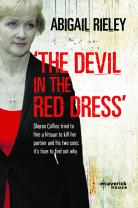Sean Keogh was sentenced to four years in jail today. He was convicted earlier this month for his part in the murders of Polish men Pawel Kalite and Marius Szwajkos in Drimnagh in February 2008. His co-accused in that trial, 19-year-old David Curran, is already serving a life sentence for the murders. Curran was the one who wielded the screwdriver that left both men brain dead within seconds.
Throughout the trial it was obvious that Keogh was very much the afterthought in this trial. His part in the attack was really little more than a henchman and it wasn’t until the very end of the trial when the DPP dramatically introduced a new charge of assault which Keogh instantly pleaded guilty to. He had admitted himself that he had kicked Pawel Kalite in the head and face as he lay on the pavement outside his house, fatally wounded.
Whenever there’s a co-accused whose part in proceedings is relatively cut and dried they will always appear to be something of an after thought in the trial. It was the same with Essam Eid during the Devil trial. It was always Sharon Collins’ legal team who stood up to fight every legal challenge. She had a lot more to fight for. Eid had been caught red handed. So in this trial Curran was the one who had been seen with the screwdriver. He was the one who had done the deed. Even when he was charged with murder Keogh was never really cast as anything more than a tagger on, a follower, nothing more than a henchman to Curran’s brutal villain.
Fighting a murder charge on “common design” or “joint enterprise”; the legislation that allows the get away driver to be charged with robbery even if he never set foot in the bank, is always a tricky one. In the case of Keogh it was certainly a tricky one to convince a jury on. And in the end they weren’t convinced.
It emerged today that Keogh had a much longer record than Curran. Keogh had been a regular of the children’s courts and the circuit and district courts, racking up 75 previous convictions. They weren’t major crimes, mainly the kinds of charges you hear for a habitual joy rider. He’s someone who’s drifted from one misdemeanour to another until his out of control path led him into real trouble. This was a trial that shone a spotlight on the lives of some teenagers in sink estates all over, brutal, senseless and frequently brief. A life filled with drink, drugs and petty crime with little or no respect for life, their own or others. A depressing view but an all too common one in the daily business of the criminal courts.
Sean Keogh kicked the head of a dying man – hard enough to break his teeth – yet it’s all too easy to dismiss him as the hapless henchman. His crime is after all one of assault, not of murder. But the sheer, depressing brutality of this case is going to stick. Even if it’s a horribly familiar tale.


Leave a Reply